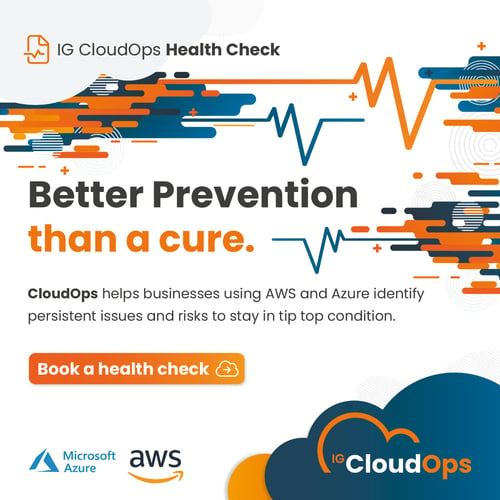The steps to a successful deployment in the Amazon Cloud
Moving to the Amazon cloud can have a number of advantages for a business, the ones most often talked about are cost saving and scalability. But they are often the two that businesses fail to realise.
A migration is always a complex process and should be planned and carried out to minimise the impact on the business's day-to-day operations. Even small to medium sized businesses have multiple applications and storage to move across. Each one requires a well thought out migration plan.
Given how easy it is to use the wizards and throw out environments, it can be tempting to jump right into the process of migrating to AWS (Amazon Cloud). After all, setting up virtual machines (EC2) can be done in minutes with the wizard.
While the AWS wizard simplifies the process of creating an environment by offering a user-friendly, point and click approach, it also comes with potential downsides that warrant consideration. The wizard often makes decisions based on default settings and configurations, which might not align well with the specific use case. This can lead to instances where critical settings are overlooked, potentially impacting performance, security, or resource allocation.
Moreover, relying solely on the wizard might hinder users from gaining a deeper understanding of the underlying infrastructure and components, limiting their ability to troubleshoot issues or make advanced adjustments. So while the AWS wizard can speed up the setup process, admins should carefully evaluate whether it meets their needs or if manual configuration might be a more suitable approach.
Without properly scoping and testing your AWS architecture it often leads to performance and cost problems later on. Also if things are created using the interface and no standard conventions are put in place for things like naming or security then you can have trouble changing later on or leave security holes.
At IG CloudOps, we have worked with organisations across multiple sectors to help them move their apps and services to AWS successfully. We understand the process from planning through to ongoing monitoring and can help build a business case and develop infrastructure that is robust, efficient and secure.
Our AWS deployment support method is based on an analysis of your needs to ensure that you have a sufficient foundation for the transition - both in terms of software and business requirements.
Moving to the AWS cloud is often an opportunity to re-architect an existing solution to make sure it runs most efficiently in the cloud environment.
We follow a 4 stage process that is built on the best practice guidelines for cloud migration that were developed by Amazon.
Assessment
We start by reviewing your current application and hosting environment to understand what your requirements are likely to be in AWS. This considers all aspects of your plan including:
- User requirements
- Business priorities
- Compliance issues
- Existing infrastructure
Within this assessment, we review stakeholder goals and current issues and review business opportunities as well as determining what should and can be migrated to AWS – it may not be possible to move everything in one go, or there may be data handling requirements to consider.
Planning
A comprehensive plan for your deployment should be developed which includes the following elements:
Prioritisation
What can and cannot be moved to AWS, and in what order? This will also consider whether any applications require a redesign in order to work in a cloud environment.
Platform Choice
The basic functionality of the major cloud providers (Amazon and Microsoft) is similar, but one may be a better option than the other for your specific needs. Some projects do switch focus as more information is gathered.
Architecture
Following analysis of your requirements, it is essential that a full architecture is developed that considers all aspects of your application including:
- Networking
- Security and Access Management
- Data Protection
- Monitoring
During this process, we will also consider what skills you have available in house to manage the cloud on an ongoing basis to ensure continued optimal performance.
Execution
The actual launch of your application in AWS is made smoother by the initial planning and work to develop a solution. During this process, it is essential that business interruption is minimised.
The actual migration to AWS requires multiple steps to ensure that the environment is ready, functional, and secure:
- Framework deployment
- Data Migration
- Application Migration
- Testing & Validation
It is critical to examine the steps done and compare the output to the original strategy at each stage of the process. Checking sure everything works as planned from beginning to end decreases risk at the moment of final deployment.
Support and Management
There are chances to further enhance your environment after you have successfully launched. Over time the AWS platform changes as new services are added and others retired, keeping on top of these changes and tweaking your environment is an ongoing process to make sure you are both secure and maintain cost effectiveness.
We provide bespoke monitoring and management tools for our clients that help to keep their Amazon cloud environments running securely and efficiently. Our CloudOps provides detailed financial and usage information about your deployment that can be used to determine whether there are opportunities to reduce costs and improve efficiency. If you would like to talk to one of our certified experts about how we can help you protect your cloud investment contact us for more information
CloudOps has been developed to help your team manage your AWS deployments. For an overview of the main functions please read more here.
Or get in touch and speak to our team about your AWS challenges.









